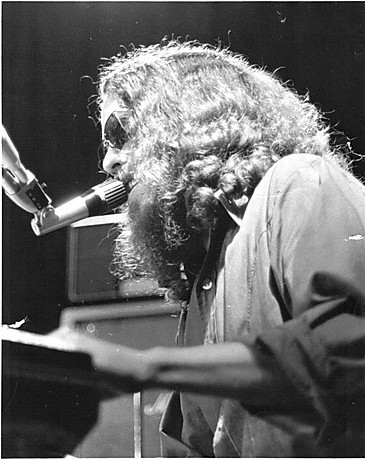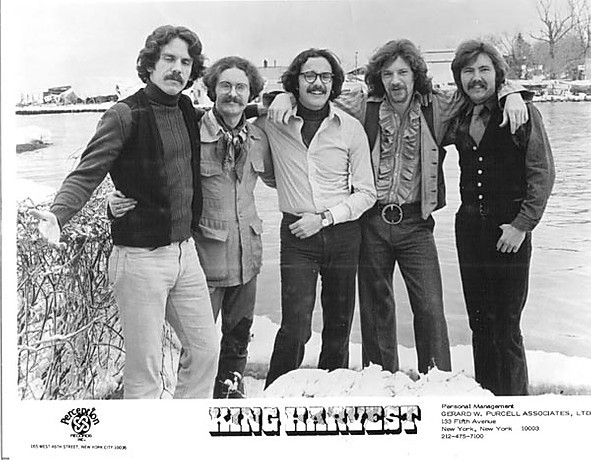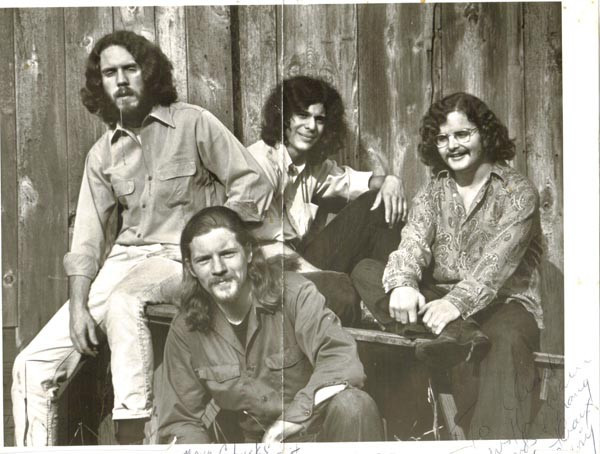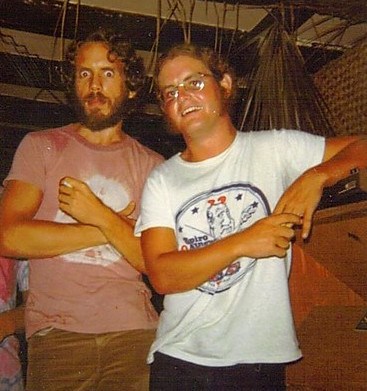Music has the extraordinary power to transport us, to evoke joy, and to tell stories that resonate across generations. Among the most enduring songs that capture this magic is “Dancing in the Moonlight.” While many know and love the feel-good vibes of this classic tune, few are aware of the deeply personal and profoundly moving story that sparked its creation. This is the tale of Sherman Kelly, the songwriter behind “Dancing in the Moonlight,” and the unexpected origins of a song that has become a soundtrack for carefree nights and joyful celebrations.
From Concert Anticipation to Song Origin
Like many music enthusiasts, I had eagerly anticipated a weekend concert featuring Pure Prairie League, Poco, and Orleans. The latter, in particular, brought to mind their rendition of a song that has long held a special place in my playlist: “Dancing in the Moonlight.” This King Harvest gem, penned by Sherman Kelly, is a quintessential 70s anthem that never fails to lift spirits.
Intrigued by the song’s enduring appeal, I delved into YouTube, watching various performances of “Dancing in the Moonlight.” It was there, in the comments section of an Orleans video, that I stumbled upon a comment from Sherman Kelly himself. The discovery ignited my curiosity. As someone captivated by the narratives behind iconic songs, I felt compelled to reach out to Kelly, hoping he might share the story of “Dancing in the Moonlight.” To my delight, he agreed, and the story he unveiled was far more captivating and complex than I could have imagined.
A Night in St. Croix: Trauma and Inspiration
The genesis of “Dancing in the Moonlight” is rooted in a harrowing experience that Sherman Kelly endured in 1969. During a period when he was managing a nightclub in St. Thomas, Virgin Islands, Kelly and his companions embarked on a day trip to St. Croix aboard a rented yacht. Unfortunately, Kelly, unaware of his susceptibility to seasickness, became violently ill during the voyage, along with his girlfriend.
Upon reaching St. Croix, while their companions disembarked in search of dinner, Kelly and his girlfriend, still reeling from seasickness, decided to remain ashore for the night, unable to face returning to the swaying yacht in the harbor. However, in his disoriented state, Kelly realized he had left his wallet on the boat, leaving them without funds for accommodation.
They approached a small innkeeper, explaining their predicament and promising to settle the bill the following morning. The innkeeper’s shocking response was to offer them a room in exchange for Kelly’s girlfriend sleeping with him. Appalled, they sought refuge at a second inn, only to be turned away again.
 Sherman Kelly onstage in the 1970s.(Photo courtesy of Sherman Kelly)
Sherman Kelly onstage in the 1970s.(Photo courtesy of Sherman Kelly)
Faced with no other options, Kelly’s girlfriend suggested, “It’s a beautiful night. Why don’t we just stretch out on the beach?” They found a spot on the sand and fell asleep under the stars. Tragically, this decision led to a terrifying encounter.
The Attack and its Aftermath
In the darkness of the St. Croix night, Kelly and his girlfriend became victims of a brutal assault by a local street gang. Five men wielding baseball bats viciously attacked Kelly, while his girlfriend was subjected to a horrific sexual assault by the gang leader, with the others waiting their turn. In a moment of desperate resilience, Kelly regained consciousness amidst the beating and fought back, creating enough disturbance to frighten off the attackers.
Injured and disoriented, they managed to stumble towards the lights along the shoreline, eventually reaching the only hospital in St. Croix. Unbeknownst to them at the time, they were likely among the early victims of the notorious Fountain Valley Gang, infamous for a later massacre of tourists in 1972 that devastated St. Croix’s tourism industry for years to come.
Kelly’s condition was critical. He recalls waking up in the hospital to the sounds of his roommate’s suffering, followed by doctors discussing his grim prognosis. “‘That’s it, he’s gone,’ said one doctor about the other patient. ‘What about him, you think he’s gonna make it?’ And the other doctor said, ‘No, I doubt it.” I realized they were talking about me,” Kelly recounted.
Miraculously, Kelly survived. After days in the St. Croix hospital, he returned to St. Thomas and then to New York, where he underwent further medical treatment to repair the extensive injuries to his face and body.
Finding Light in Darkness: The Birth of “Dancing in the Moonlight”
Returning home to Ithaca, New York, Kelly was still grappling with pain and persistent headaches. Unable to perform with a band, he turned to songwriting as a means of coping and healing. It was during this period of convalescence that the seeds of “Dancing in the Moonlight” began to sprout.
“I envisioned an alternate reality, the dream of a peaceful and joyous celebration of life. It was just me imagining a better world than the one I had just experienced in St. Croix,” Kelly explained. From the depths of trauma and violence emerged a song about joy, peace, and unity – a testament to the human spirit’s capacity for resilience and transformation. The horrific events of that night on the beach in St. Croix became the unlikely catalyst for a song that would bring light and happiness to countless listeners.
 King Harvest in 1972.(Photo courtesy of Sherman Kelly)
King Harvest in 1972.(Photo courtesy of Sherman Kelly)
The Song’s Journey: From Boffalongo to Global Hit
“Dancing in the Moonlight” quickly resonated with audiences. “It was amazing. People liked the song right from the start. I liked it, but I wouldn’t have predicted that it would become a big hit,” Kelly admitted. However, King Harvest wasn’t the first to record the song.
Early Versions and Boffalongo
In 1970, Kelly joined Boffalongo, a band featuring his brother Wells Kelly, Larry Hoppen, Dave “Doc” Robinson, and Peter Giansante. Boffalongo recorded “Dancing in the Moonlight” for their album “Beyond Your Head,” with Sherman Kelly on lead vocals. Despite Kelly’s self-deprecating view of his vocal performance, hampered by a negative studio experience, the Boffalongo version gained regional popularity. Another group, High Broom, also recorded the song in 1970, but it didn’t chart.
King Harvest’s Breakthrough
When Boffalongo disbanded, Wells Kelly and Doc Robinson joined King Harvest. Wells introduced “Dancing in the Moonlight” to the band, and their rendition, featuring Robinson on lead vocals, became a breakthrough hit in 1972. It soared up the charts, reaching No. 10 on the Cash Box Top 100 and No. 13 on the Billboard Hot 100, solidifying its place as a 70s classic. Sherman Kelly even toured with King Harvest during the summer of 1972, adding harmonies to live performances of his song.
Orleans and Continued Legacy
Wells Kelly later joined forces with John Hall and Larry Hoppen to form Orleans. Orleans also embraced “Dancing in the Moonlight,” further cementing the song’s legacy. Even today, a current iteration of Orleans, featuring John Hall and Larry Hoppen’s brothers, continues to perform the beloved song.
Sherman Kelly’s Life Beyond the Moonlight
While “Dancing in the Moonlight” became a defining moment in Sherman Kelly’s musical journey, his life took diverse and meaningful turns. A graduate of Cornell University with degrees in psychology and English, he pursued further studies in Paris, Switzerland, and New York City before his songwriting success.
From Music to Psychotherapy
Following the tragic loss of his brother Wells in 1984, Sherman Kelly found the music industry too painful and shifted his focus. He earned a master’s degree in social work and psychotherapy, dedicating his career to helping others as a psychotherapist until his retirement.
 Boffalongo, circa 1970.(Photo courtesy of Sherman Kelly)
Boffalongo, circa 1970.(Photo courtesy of Sherman Kelly)
Enduring Legacy of “Dancing in the Moonlight”
Despite stepping away from the forefront of the music world, Sherman Kelly’s musical contributions continued to resonate. In 2008, he released a solo album, “Burnin’ the Candle,” featuring collaborations with his late brother. Furthermore, “Dancing in the Moonlight” experienced a resurgence in popularity when Toploader covered it in 2000, achieving international success. The song has also been featured in films, television, and video games, ensuring its continued appeal to new generations.
“Dancing in the Moonlight” stands as a testament to the transformative power of music. Born from personal trauma, it evolved into an anthem of joy and escapism, touching the hearts of millions. Sherman Kelly’s story reminds us that even in the darkest of times, creativity and hope can emerge, and that a single song can carry a message of resilience and light that transcends its origins.
 Sherman Kelly, left, and Larry Hoppen, who would go on to form the band Orleans.(Photo courtesy of Sherman Kelly)
Sherman Kelly, left, and Larry Hoppen, who would go on to form the band Orleans.(Photo courtesy of Sherman Kelly)

